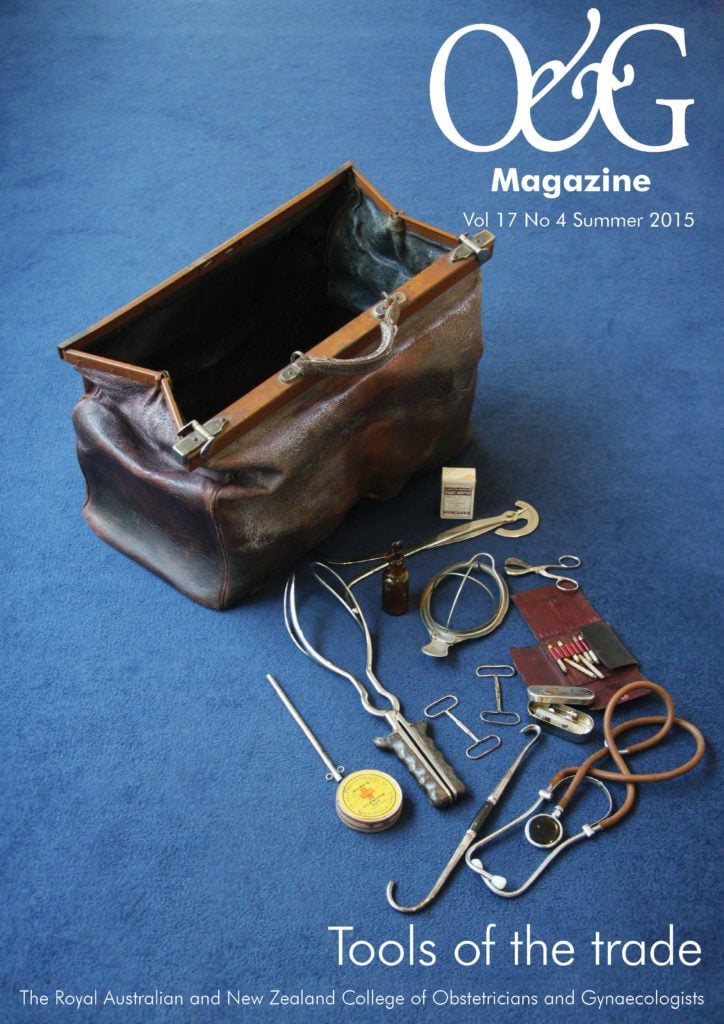For the broader O&G Magazine readership, balanced answers to those curly-yet-common questions in obstetrics and gynaecology.
Q
‘A 40-year-old patient saw me for her first antenatal visit at ten weeks. She has read all about cell-free DNA testing and would like this as a screening test. However, she also wants combined first-trimester screening too, “just to be sure”. What should I do?’
a
All pregnant women should have a discussion about screening for Down syndrome and other chromosome abnormalities as early as possible during pregnancy.1 While the internet and social networks have provided women with much better access to information about healthcare, they cannot replace an individualised discussion with their maternity care provider.
As the risk of Down syndrome increases with maternal age, this patient would be considered at high risk based on her age alone, with a risk of one in 100 of an affected baby at term. She and her partner’s medical and family history should also be reviewed to ascertain any additional risk factors for genetic or chromosome abnormalities.
If, as this question suggests, the woman wishes to have a screening test, then her two options at ten weeks of gestation are cell-free DNA testing or combined first trimester screening.
Her comment that she wants two tests ‘just to be sure’ indicates that she places a high emphasis on the detection rate and is concerned about missing an abnormality.
Cell-free DNA screening (or noninvasive prenatal testing [NIPT]) is a test based on analysis of DNA from the placenta in maternal blood. This has been available in Australia since 2012, and is the most accurate screening test for Down syndrome, with a very high detection rate of 99.2 per cent and low false positive rate of 0.09 per cent.2 It also detects trisomy 18 and 13 and provides the option of testing for fetal sex and sex chromosome aneuploidies such as Turner syndrome.
A cfDNA test would be a suitable primary screening test for this 40-year-old woman. There is extensive published data on its excellent performance in high-risk women. The woman should understand that cfDNA is not diagnostic and that false positive results do occur. If this woman has a high-risk result on cfDNA, then a confirmatory diagnostic test, such as amniocentesis or chorionic villus sampling (CVS), should be recommended. There are several overseas and local providers cfDNA testing in Australia, with variable costs from around $500 upwards.
Combined first trimester screening (CFTS) is the current publicly funded screening test in Australia and is still the standard of care for the general population. However, it is NOT advisable to perform CFTS risk calculation for Down syndrome risk after a low-risk cell-free DNA result ‘just to be sure’ as it will increase the chance of a false positive result (three to five per cent) without an appreciable improvement on the detection rate. Several professional societies, such as RANZCOG and the International Society of Ultrasound in Obstetrics and Gynaecology3, have already cautioned against the use of CFTS after a low-risk NIPT result for trisomy 21 risk calculation.
However, the disadvantage of cfDNA as a primary screening test for Down syndrome is that it does not provide an early structural assessment of the fetus at 11–13 weeks. Many major fetal malformations can be detected at this stage, providing women with an early opportunity for diagnosis and further investigations. Women who have cfDNA as a primary screening test in first trimester should also be offered an 11–13 week scan for an early structural survey (but not a formal Down syndrome risk calculation). If there is a structural abnormality (including a nuchal translucency ≥3.5mm), this increases the chance of an atypical chromosome abnormality that would not be detected by the standard cfDNA panels. In this case, the woman should have genetic counselling and be offered a diagnostic test for a molecular karyotype with chromosomal microarray.
Women should also be informed about the small risk of cfDNA test failure (approximately one to five per cent). The turnaround time for a cfDNA result (four to ten days, depending on provider location) should be factored into the screening pathway so that if there is a test failure, the woman is still at an appropriate gestation to have CFTS as an alternative screen.
Finally, if the woman is extremely anxious about the risk of a chromosome abnormality, she has the option to bypass screening altogether and to choose a diagnostic test, such as CVS or amniocentesis. Advanced maternal age is decreasing as a primary indication for invasive testing in Australia, owing to its low positive predictive value and the small, but appreciable, risk of procedure-related miscarriage. If a woman chooses prenatal diagnostic testing, she needs to understand that even in this modern age of genomic medicine, no test, or combination of tests, can guarantee a child free from a genetic disease.
References
- RANZCOG Statement C-Obs 59. Prenatal screening and diagnosis of chromosomal and genetic abnormalities. www. ranzcog.edu.au/doc/prenatal-screening-chromosomal-abnormalities.html . Updated March 2015.
- Gil MM, Quezada MS et al. (2015) Analysis of cell-free DNA in maternal blood in screening for fetal aneuploidies: updated meta-analysis. Ultrasound Obstet Gynecol: 45(3):249-66.
- ISUOG consensus statement on the impact of non-invasive prenatal testing (NIPT) on prenatal ultrasound practice. Ultrasound in Obstet Gynaecol 2014: DOI: 10.1002/uog.13393.
Further reading
Sachs A, Blanchard L, Buchanan A, Norwitz E, Bianchi DW. Recommended pre-test counseling points for noninvasive prenatal testing using cell-free DNA: a 2015 perspective. Prenat Diagn 2015, 35: 968-971. doi: 10.1002/pd.4666.






Leave a Reply